Genes are a working subunit of DNA. It's the things that determine our physical appearance, known as traits. Traits are the characteristics we inherit from our parents. Each gene contains a set of instructions, usually a coding forparticular protein. There are about 25,000 to 35,000 genes in each cell in the human body. Genes are not only found in humans, but also in animals as well. Between 1856 and 1863, a scientist named Gregor Mendel discovered genes when he was experimenting on pea plants. He was cross-pollinating two pea plants with a genotype of TT. In that generation, Mendel noticed that there were only tall plants with genotype of TT. His statement was that there is a factor for tallness that is passed down. hen he cross-pollinated two short pea plants with a genotype tt, he noticed that there were only genotype of TT and a genotype of tt, he had a result of a tall plant with a genotype of Tt. When he bred two of the Tt plants, the result he had was three-forths of the generations were tall plants and one fourth were short plants. In 1865, when Mendel well spoke the laws of inheritance, which now bear his name, he did not use the terms "gene". He referred them as "elements" or "characters". Mendel described the patterns of inheritance he had observed in terms of character pairs. These pairs split up to form the next generation of character pairs and remain unconnected of the behavior of other character pairs. |  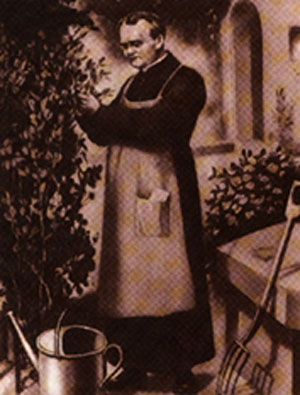 Gregor Mendel 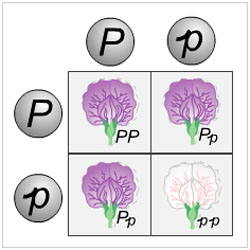 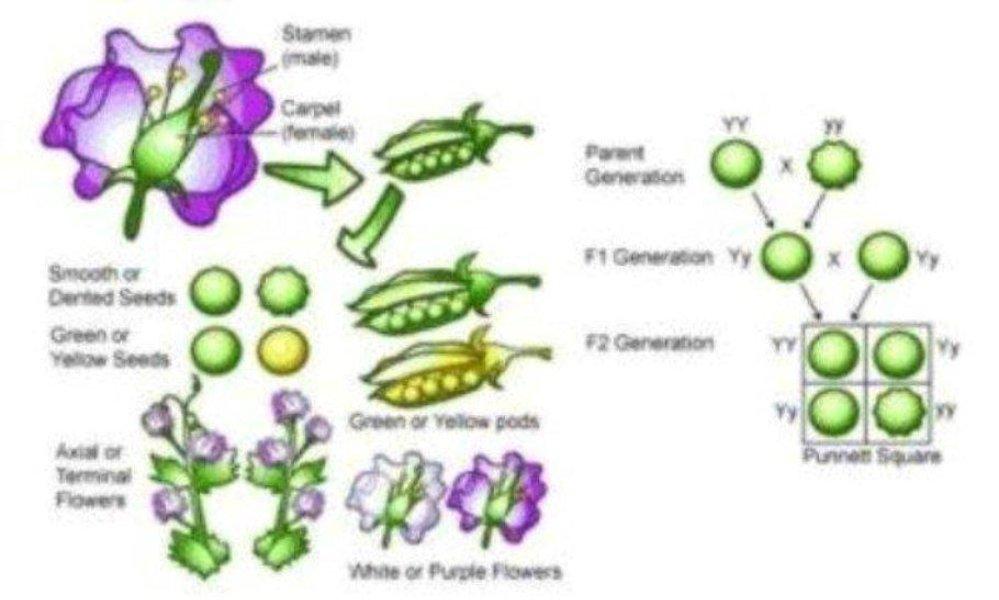 |
In 1962 James Watson (1928– ), Francis Crick (1916–2004), and Maurice Wilkins (1916–2004) jointly received the Nobel Prize in medicine or physiology for their determination in 1953 of the structure of deoxyribonucleic acid (DNA). Because the Nobel Prize can be awarded only to the living, Wilkins's colleague Rosalind Franklin (1920–1958), who died of cancer at the age of 37, could not be honored. The molecule that is the basis for heredity, DNA, contains the patterns for constructing proteins in the body, including the various enzymes. A new understanding of heredity and hereditary disease was possible once it was determined that DNA consists of two chains twisted around each other, or double helixes, of alternating phosphate and sugar groups and that the two chains are held together by hydrogen bonds between pairs of organic bases—adenine (A) with thymine (T) and guanine (G) with cytosine (C). Modern biotechnology also has its basis in the structural knowledge of DNA—in this case the scientist's ability to modify the DNA of host cells that will then produce a desired product. Inspired by Pauling's success in working with molecular models, Watson and Crick rapidly put together several models of DNA and attempted to incorporate all the evidence they could gather. Franklin's excellent X-ray photographs, to which they had gained access without her permission, were critical to the correct solution. The four scientists announced the structure of DNA in articles that appeared together in the same issue of nature. Then they moved off in different directions. Franklin went to Birkbeck College, London, to work in J. D. Bernal's laboratory—a much more congenial setting for her than King's College. Before her death she made important contributions to the X-ray crystallographic analysis of the structure of the tobacco mosaic virus—a landmark in the field. Wilkins applied X-ray techniques to the structural determination of nerve cell membranes and of ribonucleic acid (RNA)—a molecule that is associated with chemical synthesis in the living cell—while rising in rank and responsibility at King's College. Crick stayed at Cambridge and made fundamental contributions to unlocking the genetic code. He and Sydney Brenner demonstrated that each group of three adjacent bases on a single DNA strand codes for one specific amino acid. He also correctly hypothesized the existence of "transfer" RNA, which mediates between "messenger" RNA and amino acids. | 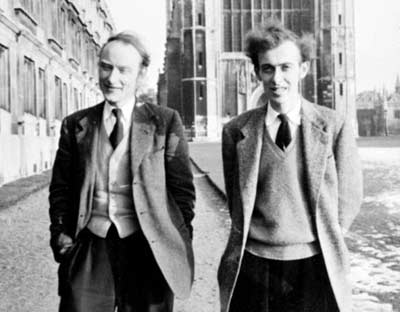 James Watson & Francis Crick 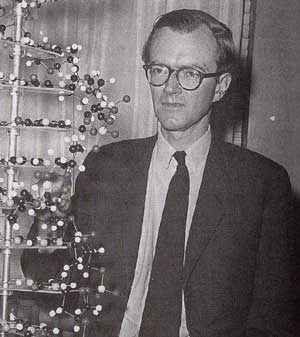 Maurice Wilkins 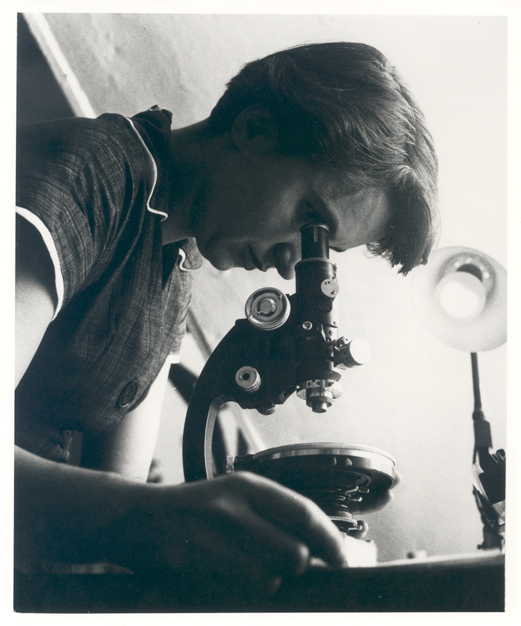 Rosalid Franklin |